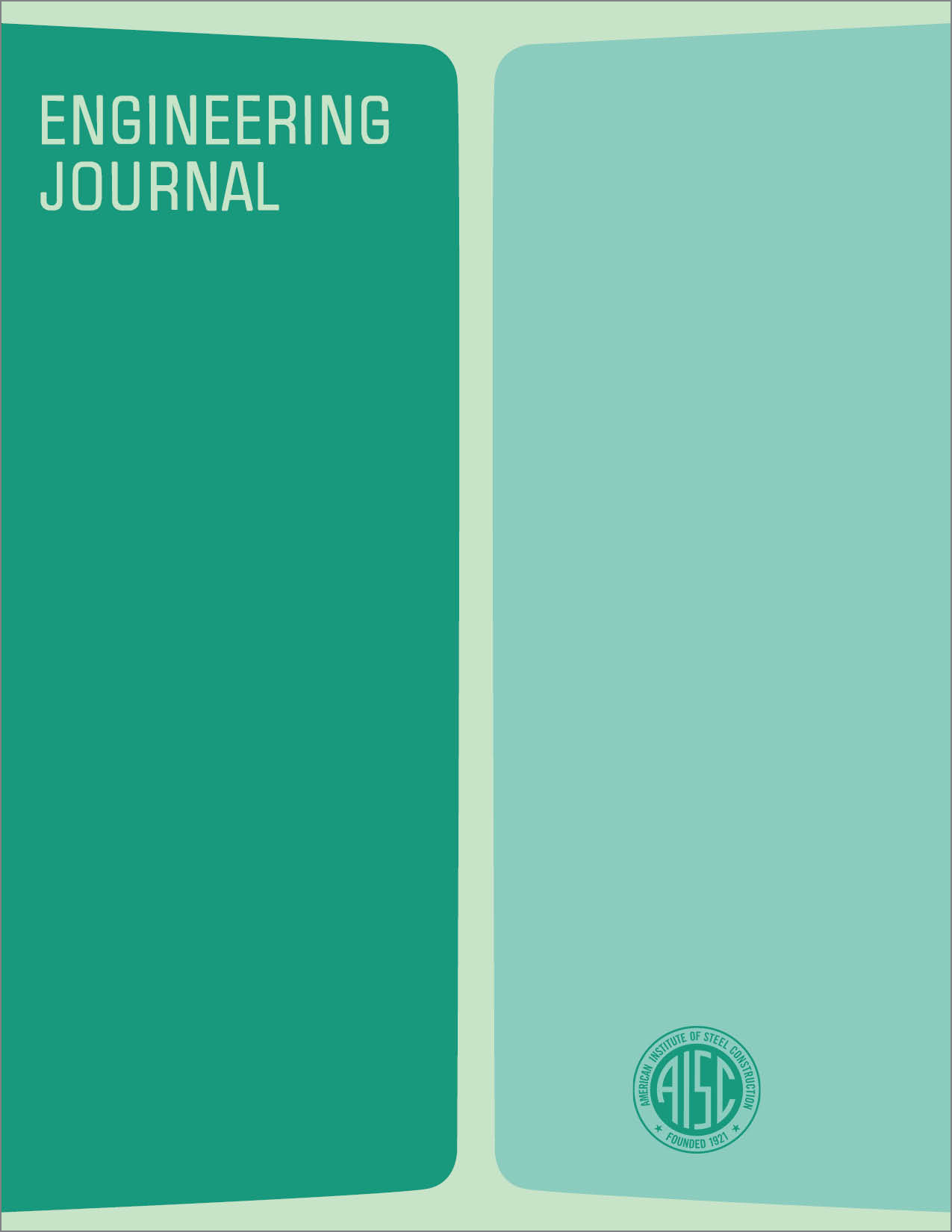Eccentrically Loaded Weld Groups; AISC Design Tables
DOI:
https://doi.org/10.62913/engj.v17i4.354Abstract
Historically the design tables for eccentric loads on weld groups presented by the American Institute of Steel Construction (AISC) in the Manual of Steel Construction have been based on the assumption that the bolt or weld element furthest from the group centroid controlled the design load of the total group. The remaining bolts or weld elements were assumed to carry a proportional amount of load depending on the relative distance from the centroid. The overall stiffness of the configuration was considered to be a function of the polar moment of inertia. This procedure was known to give a generally conservative solution to a complex problem. It was known that, with the exception of nearly square configurations and relatively low loads, the polar moment of inertia does not adequately represent the stiffness of a joint, especially if inelastic deformations are considered. The preceding discussion has explained how the design tables for eccentrically loaded weld groups have been developed for use in the new 8th Edition Manual.2 The tables result in substantially increased values, in some cases depending upon the group geometry and load eccentricity. However, because of the limited available research, which involved only A36 steel and E60 electrodes, a certain amount of conservatism had to be introduced to keep stresses within the Specification limits.

